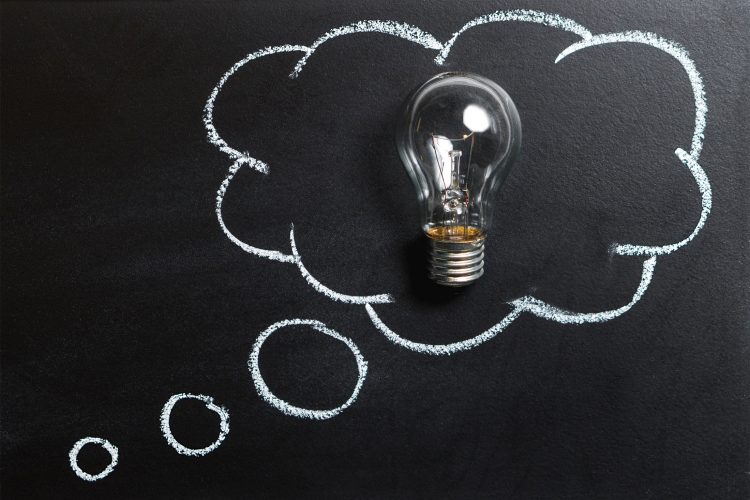Word or phrase possessing a different meaning from its literal definition is called a figure of speech. Different types of figure of speech with Examples in English are used for expressing different meanings.
This is an integral part of the English language and can be found in poetry, oral literature and even in everyday conversations. For eye-catching purposes and also for adding humor, advertising slogans, newspaper headlines, greeting-card rhymes, captions of images etc. use different types of figures of speech.
Figurative speech makes communication even more expressive and creative. These have always been a huge part of the English language and even today also more additions are being done. Let’s check out the different kinds of figures of speech and meaning.
Types of Figure of Speech with Examples in English
Figurative speech is used for conveying difficult meaning and also for bringing clarity in writing. These are used for indirectly stating something which an ordinary sentence can not do. Let’s check the types of figurative speech:
What is a Figure of Speech?
A figure of speech is a departure from normal word usage in order to increase the effectiveness of the words. It is essentially a symbolic language made up of a single phrase or word. To convey a meaning other than the literal meaning, it could be a metaphor, simile, or personification.
Importance of Figure of Speech
It adds to the elegance of the writing. It adds depth to the sentence and gives the reader a sense of awe. It breathes life into the writer’s words.
They demonstrate not only the writer’s intention but also his motivation for employing such language.
It gives the writing more flavour and makes it more enjoyable for the reader.
Metaphor – Types of Figure of Speech with Examples in English
This is used for comparing two unlike or unrelated things or ideas which have some common qualities. Metaphor is used for representing ideas through comparison.
Example:
- Her father has a heart of stone.
- Love is a battlefield.
- He went through a rollercoaster of emotions.
- Chaos is a friend of hers.
- He was drowning in a sea of grief.
- The classroom is a zoo.
- I am a night owl.
- He behaved like a pig at the dinner party.
- The stormy sea looks like a raging bull.
- She was a swan dancing across the stage.
- Her mother’s eyes were fireflies.
- The alligator’s teeth are white daggers.
- The equipment at the laboratory is old dinosaurs.
- Jenny was a chicken.
- His dad is a road hog.
- Our teacher was a dragon.
Some more Examples:
- Her kid is a shining star.
- Donations to the charity were a tsunami.
- The stadium was a lake after the rain.
- The sun is a golden ball.
- The clouds were balls of cotton.
- That lawn is a green carpet.
- Her eyes are sparkling diamonds.
- His temper was a volcano, ready to explode.
- These two friends are two peas in a pod.
- Kisses are the flowers of affection.
- The calm lake in the forest was a mirror.
- The full moon is a white balloon.
Also Read: Online English Speaking Course App: Top 8 Apps to Improve Your English Speaking
Simile – Types of Figure of Speech with Examples in English
Simile is used for comparing two unlike or unrelated things or ideas using the words like or as. This type of figurative speech is very much used in daily conversations.
Examples:
- As tough as rock
- As hard as nails
- As hot as hell
- As innocent as a lamb
- As sweet as sugar
- As black as coal
- As tall as a giraffe
- As common as dirt
- As cold as ice
- As white as a ghost
- As cute as a kitten
- As bright as a button
- As blind as a bat
- As happy as a clam
- As light as cotton
- As shiny as gold.
- As bold as brass
- As dry as a bone
- As deep as the sea.
- Fits like a sock.
- Ate like a pig.
- Sleeping like a dog.
- As brave as a lion.
Some more Examples:
- As sly as a fox
- As clear as day.
- As big as an elephant.
- As busy as a bee
- As sharp as a razor.
- As tough as an old boot.
- As easy as pie
- Like a fish out of water
- Cuts like butter.
- Moves like a snail.
- Soft like velvet.
- Ran like lightning.
- Teeth like razors.
- Slept like a baby.
- As sweet as honey.
Hyperbole – Types of Figure of Speech with Examples in English
Hyperbole is an exaggeration created to bring out humour or emphasize a point. These exaggerations are too monstrous to be the truth. This is used for adding depth to a statement.
Examples:
- Older than the hills.
- Her brain is the size of a pea
- I have a million things to do today.
- I had a ton of work.
- I’ll die if I can’t buy that perfect diamond ring.
- She’s as skinny as a toothpick.
- The bus passed faster than the speed of light.
- His new car cost a gazillion dollars.
- They act as if they are too poor to have two cents to rub together.
- That dress is so old, the last time he wore it he was riding a dinosaur.
- They’ve got tons of money.
- You could have knocked me over with a feather.
- She is so thin that the wind can carry her.
Some other Examples:
“So first of all, let me assert my firm belief that the only thing we have to fear is fear itself.”
-Franklin Delano Roosevelt, First Inaugural Address.
“Please sit down because having produced nine million award shows, I know the producer’s up there saying, ‘Hurry, say thanks fast’.”
-Dick Clark, Daytime Emmy Award Acceptance Address.
“I think this is the most extraordinary collection of human talent, of human knowledge, that has ever been gathered at the White House with the possible exception of when Thomas Jefferson dined alone.”
-President John F. Kennedy, White House dinner honouring Nobel Prize winners.
“That year, 1967, the Dallas Cowboys had 137 rookies in training camp. Gil Brandt was signing everybody that could walk. Only five made the team that year, and I was one of the five.”
-Larry Rayfield Wright, Pro Football Hall of Fame Induction Address.
Synecdoche – Types of Figure of Speech with Examples in English
This is one of the types where one part refers to the whole or vice versa. Let’s look at some of the examples to understand this better.
Examples:
- “Glasses” refer to eyewear.
- “Bread” refers to food
- “Wheels” refers to a vehicle.
- “Boots” refers to soldiers.
- “Sails” is often used to refer to a whole ship.
- “Bubbly” refers to champagne.
- “Hired hands” is used to refer to workers.
- “Head” refers to counting people.
Also Read: Vocabulary Words with Meaning and Sentences: Enrich and Enhance Your English
Personification – Types of Figure of Speech with Examples in English
In this type, non-living objects are given human characteristics. Let’s check out some of the examples.
Examples:
- Lightning danced across the sky.
- The car complained as the key was roughly turned in its ignition.
- The car’s headlights winked at her.
- The wind howled in the night.
- The moon is playing hide and seek with the clouds.
- My alarm clock yells every morning.
- My house is a friend who protects me.
- The last piece of the pie is calling me.
- As if the door protested as it opened slowly.
- The flowers are begging for water.
- The stairs groaned as they walked on them.
- The camera loves her since she is so pretty.
- The vacuum hums a happy tune while cleaning the floor.
Examples in Poetry:
“The night was creeping on the ground!
She crept and did not make a sound.” – James Stephens’ Check.
“Hey, diddle, diddle,
The cat and the fiddle,
The cow jumped over the moon;
The little dog laughed
To see such sport,
And the dish ran away with the spoon.” – A popular nursery rhyme
“The fog comes
on little cat feet.
It sits looking
over harbour and city
on silent haunches
and then moves on.” – Carl Sandburg’s The Fog.
Onomatopoeia – Types of Figure of Speech with Examples in English
This is used to talk about something or some action by imitating the sound related to it. Check the examples to understand them better.
Examples:
- Buzzing bee.
- The cup fell into the sea with a splash.
- The bottle fell on the chair with a thump.
- I couldn’t sleep because of the rustling leaves.
- We looked at the roaring.
Also Read: Apostrophe Figure of Speech: Know How to Learn English Fast in 4 Steps
Examples in Literature:
- For Whom the Bell Tolls by Ernest Hemingway
“He saw nothing and heard nothing but he could feel his heart pounding and then he heard the clack on stone and the leaping, dropping clicks of a small rock falling.”
- Get Me to the Church on Time by Alan Jay Lerner and Frederick Loewe
“I’m getting married in the morning!
Ding dong! the bells are gonna chime.”
- The Tempest by William Shakespeare
“Hark, hark!
Bow-wow.
The watch-dogs bark!
Bow-wow.
Hark, hark! I hear
The strain of strutting chanticleer
Cry, ‘cock-a-diddle-dow!’”
- Come Down, O Maid by Alfred Lord Tenny“son
“The moan of doves in immemorial elms,
And murmuring of innumerable bees…”
- The Marvelous Toy by Tom Paxton
“It went zip when it moved and bop when it stopped,
And whirr when it stood still.
I never knew just what it was and I guess I never will.”
Alliteration – Types of Figure of Speech with Examples in English
It’s a group of words that all start with the same letter. The repetition of a sound or a letter at the beginning of two or more words is known as alliteration.
Examples:
- Cream of the crop;
- french fry;
- hit the hay;
- pecan pie;
- super-Size;
- tough talk;
- trick or treat;
- rocky road;
- no-nonsense;
- tough talk;
- quick question;
- picture perfect;
- high heaven;
- busy as a bee;
- dead as a doornail;
- home sweet home;
- living life;
- out of order;
- right as rain.
Examples in Poetry:
‘From forth the fatal loins of these two foes…’ (Romeo and Juliet – William Shakespeare)
‘Once upon a midnight dreary while I pondered weak and weary.’ (The Raven – Edgar Allen Poe)
‘Shining sun / Green, green grass / Birds building / New nests’ (Sunny Spring – Twinkl)
Metonymy – Types of Figure of Speech with Examples in English
Metonymy is derived from the Greek word “metnyma,” which means “name change.” Metonymy is a type in which an object or idea is referred to by the name of a closely related object or idea rather than by its own name. Metonymy is the act of one word or phrase replacing or standing in for another.
- Pen as the written word.
- Sword as military aggression.
- Cradle to the grave.
- I have never read Shakespeare. – Here it refers to the works of Shakespeare.
Also Read: What is Figure of Speech in English? Different Types of Figure Speech
Apostrophe – Types of Figure of Speech with Examples in English
Apostrophe is the type in which a speaker addresses someone (or something) who is not present or who is unable to respond in real life. The entity being addressed could be a living, dead, or imaginary person, but it could also be an inanimate object (such as the stars or the ocean), an abstract concept (such as love or fate), or a being (such as love or fate) (such as a Muse or god).
Examples:
- He likes the shirt’s colour.
- Their television’s screen is not as clear as ours.
- No matter how hard I try, the refrigerator’s switch is not going to work.
- I like this bag’s shape so I use it the most.
Transferred Epithet
Examples:
- She had an unhappy marriage.
- They had a lovely day.
- I am having a hectic day.
- You will have a great day ahead.
Euphemism
Euphemism occurs when harsh or impolite words are replaced with milder terms to express the same meaning.
Examples:
- He has become a little thin on top (bald).
- Her maid is in the family way (pregnant).
- We were a little tipsy (drunk).
- No recruitment for mentally challenged (stupid) people.
- She is a special child.
Irony
Irony occurs when words or ideas end up conveying a different meaning, usually one that is diametrically opposed to their original meaning.
Examples:
- His heart is as warm as ice.
- His hands were as soft as a brick.
- I wrote a blog about how useless blog writing is.
- The oil was as cool as burning coal.
Pun
Pun is a slang term for when a word is used with multiple meanings to create humour or a light-hearted moment.
Examples:
- She has been to the dentist many times before so she knows the drill.
- Grammarians are usually very logical. They have a lot of commas.
- He was reading while sunbathing and that made him well-read (read).
- He was indulged in the thought of how lightning works until it struck him.
Also Read: Pun Figure of Speech: Get to Know What is Pun with Several Examples
Epigram
Epigram is a rhetorical device that is a satirical statement that is memorable, brief, interesting, and surprising. The word epigramma comes from the Greek word epigramma, which means “inscription” or “inscription.”
Examples:
- Silence is louder than words.
- The child is the father of the man. (Wordsworth)
- Nobody can make you inferior unless you allow them to.
- Be nice to all, start with the man in the mirror.
“Live simply, so that others may simply live.” – Mother Teresa
Antithesis
Antithesis occurs when contrasting words or words with opposite meanings are used near each other in a sentence. Antithesis is a term that refers to opposing ideas.
Examples:
“Give every man thy ear, but few thy voice.” – William Shakespeare.
“Love is an ideal thing, marriage a real thing.” – Goethe.
“That’s one small step for man, one giant leap for mankind.” – Neil Armstrong.
“Many are called, but few are chosen.” Matthew 22:14.
Oxymoron
Examples:
- Let us be alone together.
- By his attitude, it looks like he is growing smaller day by day.
- There was a small crowd in the market.
“I can believe anything, provided that it is quite incredible.” – Oscar Wilde
Litotes
Examples:
- You can do it, it’s not rocket science. (it’s simple)
- She isn’t the brightest bulb in the office. (Somewhat dumb)
- Make-up was never my cup of tea. (Don’t like make-up)
- He didn’t deny that it was wrong. (Admitting that it was wrong)
Also Read: Best App to Learn English Speaking Fluently: Check Out the English Learning Platforms
Interrogation
Interrogation is when a rhetorical question is asked solely for dramatic effect rather than to elicit an answer.
Examples:
- To whom shall I hand over the papers?
- Why did they leave so late?
- Was there any particular reason behind his stomach ache?
- Would you like some tea or coffee?
- They’ve been together for a long time, haven’t they?
Exclamation
Exclamation occurs when ideas or words express strong emotions such as surprise, joy, or anger. In this type, words or sentences end in an exclamation mark.
Examples:
- You look gorgeous!
- Hey! can’t you hear me?
- Hell no! I had no intention of going there.
- Wow! I can’t believe that you actually came.
Climax
Examples:
Martin Luther King, I Have a Dream
“This note was a promise that all men, yes, black men as well as white men, would be guaranteed the “unalienable Rights” of “Life, Liberty and the pursuit of Happiness.”
Shakespeare, The Passionate Pilgrim
Beauty is but a vain and doubtful good;
A shining gloss that vadeth suddenly;
A flower that dies when first it gins to bud;
A brittle glass that’s broken presently:
A doubtful good, a gloss, a glass, a flower,
Lost, vaded, broken, dead within an hour.
Anaphora
Anaphora is the type in which the first words of successive clauses, phrases, or sentences are repeated. Anaphora is related to epistrophe, which is when words are repeated at the end of clauses, phrases, or sentences. The word “anaphora” means “to carry up or back” in Greek.
Examples:
Many examples of anaphora can be found in the Old Testament of the Bible’s Song of Songs. There are two separate uses of anaphora in this instance (from Chapter Four, Verses One and Two): the first is the speaker’s celebration of his bride’s beauty, and the second is a list of her admirable qualities.
- Look at you! You are beautiful, my darling.
- Look at you! You are so beautiful.
- Your eyes behind your veil are doves
- your hair is like a flock of goats
- coming down from Mt. Gilead.
- Your teeth are like a flock of sheep about to be sheared,
- who are coming up from being washed.
Repetition
A literary device in which a word or phrase is repeated two or more times is known as repetition. Because repetition takes so many different forms, it is rarely thought of as a single type. Instead, consider repetition as a broad category that encompasses a variety of more specific figures of speech, all of which employ repetition in different ways.
Examples:
Bob Dylan won the Nobel prize for literature for the genius of his lyrics. His song “Masters of War” shows how polysyndeton can be used to build a specific emotion:
“And I hope that you die
And your death will come soon
I will follow your casket
In the pale afternoon
And I’ll watch while you’re lowered
Down to your deathbed
And I’ll stand over your grave
‘Til I’m sure that you’re dead”
The final lines of this song of protest against the politicians behind the Vietnam War are filled with rage and disgust. Dylan’s use of polysyndeton allows him to add phrase after phrase, far beyond where listeners might expect him to stop, in order to fully convey the depth of his rage and hatred for the politicians he refers to as “masters of war.”
Conclusion
Hopefully, this article will give you a clear idea about all figures of speech. After you understand the concept well and become able to identify which figures of speech are called what, then try marking them out whenever you find any. Keep reading books and novels and also keep an eye on this page for more information that will definitely help you learn better English.
You can also share your thoughts about this article and share which types of figurative speech you use the most in your daily conversations. To share with us just comment in the below box.
Also Read: Repetition Figure of Speech: Know How to Use this Figure of Speech?
FAQ’s
1. What are figures of speech and why are they important in English?
A: Figures of speech are linguistic devices used to enhance language, making it more vivid, engaging, and expressive. They add depth and creativity to communication by using words in non-literal ways, aiding in effective expression and imagery.
2. Can you provide examples of common figures of speech used in English?
A: Certainly! Some common figures of speech include metaphors (“Time is a thief”), similes (“As busy as a bee”), personification (“The stars danced in the sky”), hyperbole (“I’m so hungry I could eat a horse”), and onomatopoeia (“The buzzing bee flew by”).
3. How do figures of speech add value to writing and speech?
A: Figures of speech add value by making language more evocative and impactful. They create vivid imagery, emphasize points, convey emotions, and engage the audience’s imagination, making communication more dynamic and memorable.
4. Are there specific techniques to identify and understand figures of speech in texts or speeches?
A: Yes, understanding figures of speech involves identifying non-literal language. Practice and exposure to various figures of speech are essential. Reading, analyzing poems, literature, and speeches can help in recognizing and comprehending different types of figurative language.
5. How can one effectively use figures of speech in their own writing or speech?
A: To effectively use figures of speech, consider the tone and context. Choose appropriate figures of speech to vividly express ideas or feelings. Practice incorporating these devices in writing or speech and pay attention to their impact on the intended audience.






